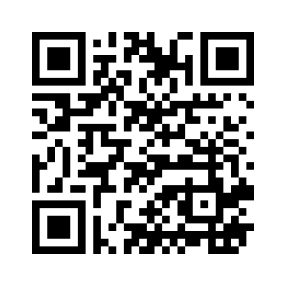Dreams have long fascinated people from every culture. Ancient civilizations saw them as messages from the gods. Modern psychologists see them as portals to our deepest thoughts. Yet, few analyses highlight one crucial detail: the perspective from which we dream. Are we viewing events through our own eyes, or are we watching ourselves from afar? These two viewpoints—first person and third person—can shift how we feel, how we interpret symbols, and how much our egos are involved. Understanding this difference can enrich our awareness of what our dreams might be trying to tell us.
Why Perspective Matters in Dreams
Perspective is more than a storytelling device. It shapes the emotional impact of each dream. When you dream in the first person, you experience everything as if it were real life. You see, hear, and feel events right through your own eyes. This immersion can make dream symbols more intense. In contrast, third-person dreams give you a view of yourself as if you were an outside observer. This distance can soften strong emotions or help you see bigger patterns. By noting how you perceive your dream world, you gain clues about how your subconscious handles stress, joy, or deep-seated fears.
Dream perspective can also affect how much control you feel. In first-person dreams, you may attempt to direct the storyline. You might even shape the environment, almost like lucid dreaming. In third-person scenarios, you can feel more passive. You watch events unfold without the same sense of agency. That difference in control can tell you something about your waking feelings of power or helplessness. Paying attention to these shifts can reveal hidden parts of your personality and emotional state.
First-Person Dreams and Ego
In first-person dreams, you are the central figure. Your ego becomes the star, taking center stage in every interaction. Because you see through your own eyes, you might feel the surge of emotions that come with each dream event. If you dream about an argument, you could wake up feeling anger or sadness, as though it happened in real life. This happens because first-person dreams closely tie into your personal stakes and raw feelings.
These dreams often highlight immediate concerns. Perhaps you have a big project at work, or you feel tension in a relationship. Your subconscious might create a dramatic scenario where you face these worries head-on. The self you see in these dreams is you—at your most vulnerable or most powerful. The ego, which is the “I” in your mental framework, is under the spotlight. This direct involvement can provide clarity about what weighs heavily on your mind. If you wake feeling unsettled, it may be a sign to explore that source of stress more closely.
Yet, the intense emotions in first-person dreams can also be draining. If a dream is frightening, your mind and body may react as if the threat is real. Nightmares that feature you in danger can cause lingering anxiety upon waking. Still, these dream experiences serve a purpose. They alert you to unresolved conflicts. They give a space to express fears that you might not address during the day. By recognizing this, you can use first-person dreams as a guide for self-discovery. They allow you to zero in on urgent matters linked to your daily life, identity, or future goals.
Third-Person Dreams and Emotional Distance
Third-person dreams place you in the role of an observer. Instead of “being” the character, you watch yourself from a distance. That one step away from direct immersion often reduces emotional intensity. You might see your dream self dealing with stressful events but feel calmer than you would in a first-person dream. This helps when confronting deep or painful issues. The mind, aiming to protect you, may create a buffer for hard truths. By offering a slight remove, your subconscious can show you what needs attention without overwhelming you.
This observational style can also reveal habits or behaviors you ignore in daily life. Maybe you see your dream self repeating patterns that reflect an actual struggle. You might watch yourself act in a way you do not approve of, yet have never addressed. The third-person viewpoint helps you notice these details more objectively. It’s as though you are watching a film of your own behavior. Once you spot these patterns, you can work on them in your waking life. Such distance can be a powerful tool for growth. It reduces the fear or shame that might arise if you had to face these issues in a fully immersive scenario.
Though third-person dreams appear gentler, they can still hold strong lessons. Emotional distance does not mean irrelevance. It can be a careful strategy your mind uses to present complicated feelings. For instance, you may witness a version of yourself in a challenging situation. You might see how you react when tested, noticing both your strengths and weaknesses. By analyzing such scenes, you can learn where you need more self-care, assertiveness, or empathy.
Balancing Ego and Distance
The difference between first-person and third-person dreams often reflects how ready you are to deal with certain emotions. When the ego is highly involved, the dream may indicate a pressing issue. You might need to address something head-on or take swift action. That urgency surfaces when you are right in the middle of the dream events. On the other hand, a dream that distances you from the action can mean you need time or space to process. You may not yet feel safe confronting a memory or belief. The dream’s third-person style helps you explore in smaller steps.
This balance can shift over time. Some nights, your dreams push you into first-person immersion. Other times, you remain in an observer’s role. Sometimes, the dream might even switch perspectives mid-scene. If that happens, pay special attention to the point of change. Did something occur in the dream that made you retreat or step forward? That switch often reflects internal conflict or a key moment of realization. Recognizing these moments can guide you to deeper insights. You learn what triggers emotional closeness or distance within you.
Interpreting First-Person vs. Third-Person Dreams
Interpretation starts with awareness. The first step is to note the dream’s perspective. Right after you wake up, jot down whether you saw events through your own eyes or from an outside vantage. Then, list any strong emotions you felt. Were you anxious, joyful, confused, or relieved? Next, consider whether the dream relates to recent experiences. Has something been bothering you, or are you anticipating a major life event?
Look at how the dream’s viewpoint might match or contrast your current emotional state. If you often feel overwhelmed, a third-person dream might be offering relief. If you avoid problems, a first-person dream might be forcing you to face them. Both scenarios can be helpful. Each is a window into your subconscious strategies for coping, healing, or growing. If you feel stuck or uncertain, try discussing your dreams with a friend or therapist. A second perspective can reveal patterns or meanings you might overlook.
Practical Tips for Dream Work
Keeping a dream journal is one of the simplest but most powerful tools. Write down every detail you recall, including the perspective. Use simple prompts like “first person” or “third person,” along with the setting, main characters, and any standout images. By recording these details over time, you can spot patterns. You might see that first-person dreams emerge during times of high stress or excitement. Third-person dreams could arise when you are processing old memories. Look also for recurring symbols. These could represent hopes, fears, or areas of life you should explore more deeply.
Consider adding a small reflection at the end of each journal entry. Ask yourself: “What might my dream be telling me?” Answering this question can help bridge the gap between dream life and daily life. If you see a recurring symbol or scenario, think about how it connects to your waking thoughts. Does a certain object always appear when you are worried about work? Does a specific location show up whenever you feel lonely? These patterns often reveal the emotional undercurrents in your life.
Handling Intense Emotional Reactions
Sometimes, you may wake up from a dream feeling stressed or shaken. This can happen with both first-person and third-person dreams. In such cases, try grounding techniques. Take a few deep breaths or meditate for a moment. Remind yourself that the dream is now over. If the dream was particularly distressing, consider talking to a professional. Some dreams can uncover past traumas or deep-rooted anxieties. A trained therapist can help you process these feelings safely.
You can also practice relaxation exercises before bed. Gentle stretching, calm music, or a short meditation can help settle your mind. If you set a more peaceful tone, your dreams may respond in kind. Over time, becoming more mindful of your pre-sleep habits can shift the emotional content of your dreams. You might still encounter deep themes, but with better tools to handle them.
Embracing the Wisdom of Dream Perspectives
Dreams serve as night-time guides through our private emotional landscapes. First-person dreams bring raw energy and direct confrontation with personal issues. Third-person dreams allow a calmer, more analytical stance. Both can offer valuable insights. One asks you to step into the fray and feel every nuance. The other invites you to step back and observe patterns without immediate emotional overwhelm.
By understanding and honoring these different perspectives, you can tap into a richer well of self-knowledge. You discover what needs urgent attention and what might benefit from slower, more measured exploration. You also learn how your ego reacts to stress, hopes, or inner conflict. In the end, whether you see yourself as the lead actor or the distant observer, each dream is a story that reveals who you are and who you might become. By welcoming these tales and decoding their viewpoints, you become a more attentive, compassionate, and self-aware traveler on your life’s journey.






